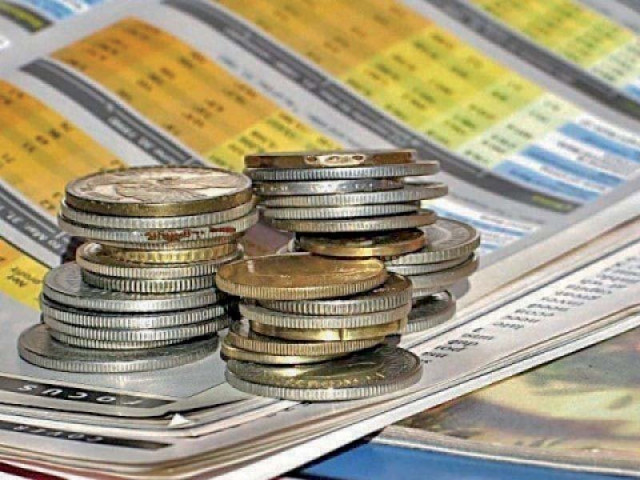
The government on Friday informed the National Assembly about a marked deterioration in Pakistan's public debt indicators, including the external debt sustainability levels, in fiscal year 2018-19 that ended in June last year.
The finance ministry said the fiscal indicators deteriorated because of low revenue collection, higher current expenditures and higher interest payments due to "rise in domestic interest rates". The State Bank of Pakistan (SBP) has kept its policy rate at 13.25% for the last many months, which significantly increased the cost of debt servicing.
Also, out of the five legally binding benchmarks set in the Fiscal Responsibility and Debt Limitation (FRDL) Act of 2005, the Pakistan Tehreek-e-Insaf (PTI) government violated four conditions in its first year in power.
Pakistan’s foreign debt sustainability indicators worsen
Due to a mounting debt pile left behind by the PML-N government, it was impossible for the PTI government to adhere to the targets given in the FRDL Act in its first year. However, it could not show improvement as compared to the previous year, which was worrisome. The position on all 10 selected public debt indicators deteriorated in fiscal year 2018-19 as compared to the preceding year, according to the statement prepared by the Debt Policy Coordination Office of the Ministry of Finance. The indicators deteriorated to the worst levels in years.
A high and unsustainable level of debt not only plagues economic growth but the resulting heavy debt servicing also lowers development expenditures in future years, underlined the Debt Policy Office.
The revenue deficit - total revenues minus current expenditures - deteriorated from 1.7% of GDP a year ago to 5.6% in the last fiscal year - the highest level since 2005. It means the current expenditures exceeded the government's revenues by Rs2.2 trillion.
The primary deficit - total revenues excluding interest payments - also stood at 3.4% of GDP, up from 2.1%. It was the highest primary deficit in six years, showed the report. The budget deficit too widened to 8.9% of GDP - the highest in over a decade.
Resultantly, the total public debt as a percentage of GDP was recorded at 84.8% or Rs32.7 trillion by June 2019 - the highest in over a decade.
"Lower revenue collection and a sharp rise in current expenditures caused deterioration in the fiscal indicators during fiscal year 2018-19," the finance ministry informed the National Assembly.
The current expenditures grew by 21% due to higher interest payments caused by a "rise in domestic interest rates". The report also showed that the total public debt jumped to 667.4% of the total revenues, up from 477% within a year.
It was quite an alarming increase in the total public debt, primarily caused by higher interest payments and building cash buffers ahead of the International Monetary Fund (IMF) programme.
Similarly, the total government debt as a percentage of total revenues also sharply jumped from 440.4% to 602.3%, according to the report. The report showed that interest servicing as a percentage of total revenues also sharply increased from 28.7% to 42.7% within a year.
The cost of debt servicing as a percentage of total revenues increased from 37.3% to 62.5%. During fiscal year 2018-19, the public debt servicing was recorded at Rs3.1 trillion as against the budgeted estimates of Rs2.4 trillion. "The total debt servicing cost increased by around 57%, which was driven by higher domestic interest payments on account of rise in domestic interest rates," according to the policy statement.
The finance ministry has given a realistic reason for surge in cost of debt servicing - unlike the political rhetoric that puts the entire blame on the PML-N government.
Pakistani group to invest heavily in Bangladesh
The debt servicing as a percentage of GDP also jumped from 5.6% to 7.9% by end of last fiscal year.
In its Debt Policy Statement 2019-20, the finance ministry informed the house that during the last fiscal year the country's external debt increased at a more rapid pace than its foreign exchange earnings.
The external debt remained constant at 130% of Pakistan's total foreign exchange earnings by the end of fiscal year 2018-19. It was for the first time in three years that the ratio remained unchanged.
The external debt as percentage of foreign exchange reserves alarmingly increased to 510%, reflecting the adverse impact in decline in the reserves. This ratio was 430% in fiscal year 2017-18, which within one year jumped to highest level in years.
The foreign exchange reserves as percentage of external debt and liabilities stood at only 13.6% in 2018-19. This ratio deteriorated from 17.2% a year earlier. This shows the government's vulnerabilities in bearing the debt and its servicing.
The external public debt-to-GDP ratio increased from 22.3% to 25.9% in the last fiscal year, according to the finance ministry.
"Apart from increase in external debt shock, reduction in GDP size in US dollars terms contributed towards increase in" in external public debt to GDP ratio, stated the government.
The external debt servicing-to-foreign exchange earnings ratio deteriorated from 10.8% to 17.2% due to repayments of Eurobonds and short-term commercial loans.
The public debt increased from 72.1% of GDP to 84.8% - way above the 60% limit set under the FRDL Act of 2005. For a developing country like Pakistan, a debt-to-GDP ratio below 50% is considered sustainable. Anything above this threshold is counted as dangerous in the long term, according to economists.
"The government objective is to bring and maintain its public debt-to-GDP ratio and debt servicing to revenue ratios to sustainable levels through a combination of greater revenue mobilisation, rationalisation of current expenditures and efficient utilisation of debt," stated the finance ministry in its concluding comments. The government is also taking the necessary steps for ensuring fiscal discipline and consolidation, stabilising the economy and accelerating growth, it claimed.
Published in The Express Tribune, February 1st, 2020.
Like Business on Facebook, follow @TribuneBiz on Twitter to stay informed and join in the conversation.


















COMMENTS
Comments are moderated and generally will be posted if they are on-topic and not abusive.
For more information, please see our Comments FAQ